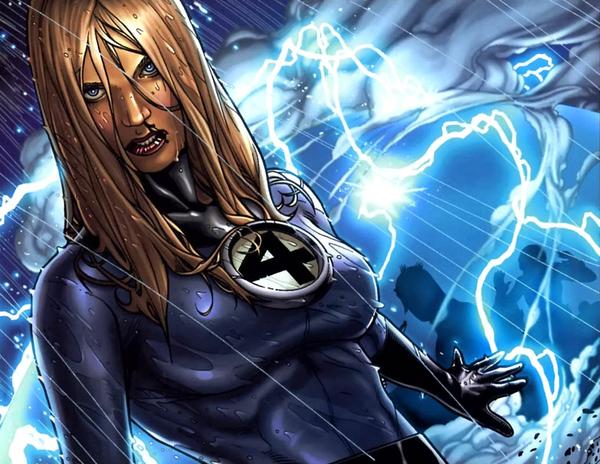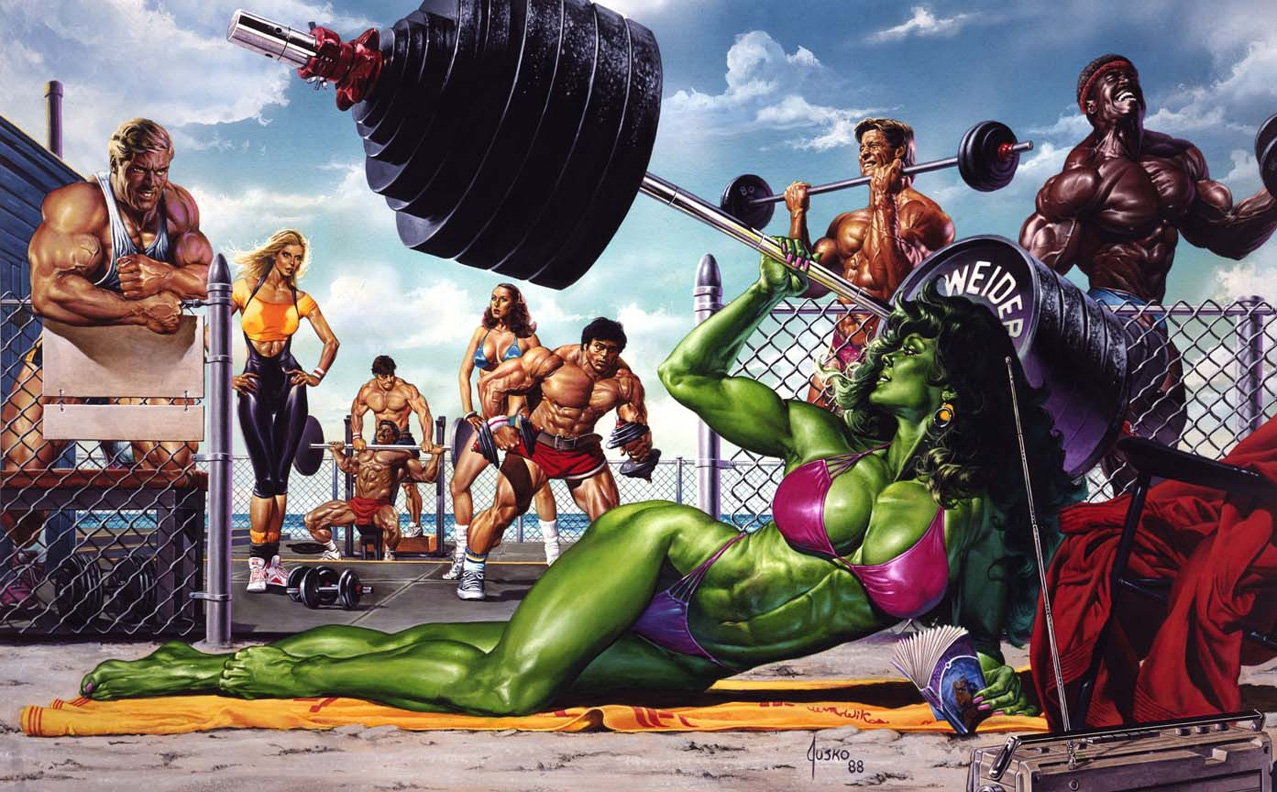This is part of The Shadow League’s Women’s History Month In Focus series celebrating excellence in sports, entertainment and culture.
In celebration of The Shadow League’s Women’s History Month in Focus series, and in anticipation of the upcoming Wonder Woman movie, I culled the archives and came up with an offering that was among most popular when it was initially published. In this selection, titled Comic Books and Sexism: A History of the Second Class Caped Crusader, I give a brief history of women comic book characters and why they’re so cool.
They’ve Come A Long Way, Baby. But Not Really
Back in 1975, the Wonder Woman television series gave thousands of imaginative girls and young ladies a super heroine that was a force to reckon with. She was faster and stronger than most men. More beautiful than most women and wiser than most kings.
Though the Linda Carter portrayed version was campy and tongue-in-cheek, it was seen as a start down the road toward equality in comic books and science fiction television and film franchises.
However, things didn’t quite go as planned. Since then, there have been no television shows based on female characters from Marvel or DC Comics. Although when it comes to films, we had Catwoman and Electra. But they were both grand disappointments. Which has left us still waiting on a new television series based on a female comic book character for nearly 40 years.
From the very beginning, American comic book publishers have struggled mightily with the idea of creating viable and acceptable female versions of the super powered male staples like Superman, Batman and Captain America. The very first popular female superhero was Fantomah. Her tagline? Mystery Woman of the Jungle. She was created by Fletcher Hanks and first appeared in Jungle Comics #2 in 1940.
With all these references to jungles and mysteries, its a bit of a surprise that she wasn’t black and was depicted as a tall blonde whose face transformed into a blue skull when her powers were activated.
However, she was predated by Sheena: The Jungle Queen, who debuted in her own comic book in 1937. Both characters predated Wonder Woman, who first appeared in Wonder Woman #1 in 1941. All three of the aforementioned women were clearly inspired by the western world’s fascination with Africa and other far off lands around the dawn of the 20th century.
Sheena’s comic book tagline reads: Trek the jungle trails of killer-beasts and savage men with Sheena, Wild Beauty of the Congo. She was basically a female version of Tarzan, who first appeared in the Edgar Rice Burroughs novel Tarzan of the Apes in 1912.

An interesting fact about Wonder Woman creator, and inventor of the polygraph, William Moulton Marston is that it was his wife Elizabeth, a prominent psychologist, who suggested the character, according to a 2001 issue of Boston University’s alumni publication.
In fact, Marston believed she represented the quintessential Wonder Woman of his day and based many of the fictional characters attributes after her. Wonder Woman and all of the female superheroes who appeared in comic books prior to her share several similarities; being stronger than most men and from some far off exotic location. Wonder Woman is an Amazon Princess from mystical Themyscira, while both Sheena and Fantomah are from the Congo and ancient Egypt, respectively.
Yes, Africa was considered a far off and mysterious location by many in the western world during the early 20th century and that mindset remains largely unchanged today.
Though Wonder Woman was created with good intentions in mind, it still was written by a staff of white males who did not have a clue how to portray a strong female figure.
While Wonder Woman was clearly a revolutionary character in the 1940s, misogynist viewpoints would creep in. For example, Editor and writer Sheldon Mayer expressed consternation regarding Wonder Woman’s weaknesses inspiring bondage imagery that had been a part of the Wonder Woman lore from the very beginning.
If her bracelets are chained together, she becomes as weak as a normal person. And when they are broken, she loses control of herself once stating “power without self-control tears a girl to pieces.”
Even the magic lasso, which some felt symbolized feminism, was often used against her by adversaries thus symbolizing the misogynist view that feminism was more of a hindrance to women than it was worth. In the 1970s, DC Comics implemented its in-house Editorial Policy Code regarding women, putting a patriarchal stance on women in comic books in writing.
“The inclusion of females in stories is specifically discouraged. Women, when used in plot structure, should be secondary in importance, and should be drawn realistically, without exaggeration of feminine physical qualities”

But the Saga Continues
Despite that, the instances of female superheroes continued to proliferate in comic books throughout the decade. But the writers were products of their time and continued writing characters along stereotypical lines during the heyday of the feminist movement.
Characters like Thundra, a Marvel rip-off of Wonder Woman, was from an alternate timeline where the sexes were divided into warring factions, and the original Man-Killer was anti-male. Batwoman, originally introduced in 1956 in Detective Comics #233, used powder puffs, perfume and a compact mirror as weapons.
The first superpowered woman of note in Marvel Comics was Sue Storm, aka the Invisible Girl of the Fantastic Four. Even she struggled for equal billing with her male counterparts early on as her invisibility power was often used as a defense mechanism rather than as an offensive capability when battling bad guys.
Her counterpart on Marvel’s Avengers was Wasp, a wise cracking woman who could shrink to the size of a Wasp and shoot energy blasts from her hands. Both would be written to be exponentially more effective and potentially lethal as time went on, and they would gain equal footing with many of their male counterparts.

Bigger, Better, Faster, Stronger, But Still Lacking Depth
DC Comics Wonder Woman was and still is considered the most powerful woman in her respective universe, even more powerful than most male superheroes. She’s also illustrated as being more willing to kill than Superman and surprisingly, Batman – both of whom have killed but only as a last resort.
As an Amazon Warrior Princess Diana isn’t big on sending maniacal opponents to jail, but would rather send them to the morgue. However, her extreme power level was something of an anomaly among characters of her type until 1975 when the relaunch of Marvels the X-Men reinvented female characters with incredibly powerful upgrades. Jean Grey became the ridiculously overpowered entity Phoenix.
And the introduction of Storm as the first super powered Black female character in the Marvel-verse. Much of the credit for this rebirth is given to writer Chris Claremont, who also wrote stories for Kitty Pride, Rogue, Spider-Woman, Ms. Marvel, Misty Knight and Coleen Wing.
Carol Danvers, aka Ms. Marvel aka Captain Marvel, is depicted as an Air Force captain who gains her powers in an explosion involving the original Marvel version of Captain Marvel. She then is endowed with his powers. One of the hardest hitting characters in the Marvel universe, she is able to absorb any kind of energy to add to her own strength.
The idea of a female Air Force captain might seem mundane today, but in 1977 the idea was a bit revolutionary in the minds of many. (Editorial note: The current Captain Marvel is actually the third Captain Marvel. The second was Monica Rambeau, a Black woman who made her first appearance in The Amazing Spiderman Annual #16)
Over at DC Comics, Vixen was meant to become the first Black female with super powers to have her own series, but that was delayed indefinitely after internal issues at the publishing company caused that idea to fall by the wayside. She has appeared as a member of the Justice League for most of her career.
Initially, I thought her powers were a little on the racist side. Check it out; a black woman with a magical necklace that allows her to mimic the abilities of any animal who has ever lived. However, as time went by, the manner in which the manifestation of her powers were illustrated made me rethink my original thought. She’s actually a pretty decent character.
However, we’d be remise if we didn’t point out that this is yet another jungle-inspired female character.

From the very beginning, super heroines were depicted with a male audience in mind. The aforementioned Fantomah, Sheena of the Jungle and Wonder Woman were all depicted as wearing revealing clothing. Storms original outfit, as well as her 1980s-introduced follow up, look like something from a dominatrix picture book.
Later renditions of the X-Men’s Rogue were insanely busty, while many other characters at both DC and Marvel are depicted in the same manner.
The objectifying way of thinking continues to draw criticism from fans and critics to this day with the skintight costumes and Brazilian butt lift-looking rear ends with double D breasts. However, the sexualized and objectifying style in which female superheroes are drawn continues to dog the industry.
She-Hulk, for example, was once depicted as simply a female version of the Hulk, who is her cousin. However, during the 1990s she was cleaned up quite a bit and now resembles, in the words of Batman v. Superman screenwriter David Goyer, a giant green porn star.

As the avalanche of comic book related franchises continue to proliferate on television and the big screen, we see a noticeable slowness to give female superheroes their own vehicles. Once again, sexism raises its ugly head. Catwoman and Elektra were largely supporting characters to Batman and Daredevil, respectively, throughout their creation.
So, why was it that these two forgettable films were made before a Wonder Woman film? Actress Gal Gadot has been tabbed as Wonder Woman for her upcoming reintroduction on film.
One of the first things mentioned about the choice prior to the announcement of Gadot as the new Wonder Woman was “She has to be pretty!” Sex sells and it appears big-time Hollywood projects helmed by such directors as Joss Whedon (The Avengers), whose vision for the franchise was scrapped by Warner Brothers in 2011, have struggled to reconcile Princess Diana’s sexiness with her immense power.
“She sort of traveled the world,” said Whedon of his idea for Wonder Woman. “She was very powerful and very nave about people, and the fact that she was a goddess was how I eventually found my way in to her humanity and vulnerability, because she would look at us and the way we kill each other and the way we let people starve and the way the world is run and shed just be like, None of this makes sense to me. I cant cope with it, I cant understand, people are insane.”
One of the biggest problems with making a Wonder Woman movie had been the costume. There was supposed to be a television series, but that got scrapped. Now we find out that she’s to make a cameo appearance in the upcoming Batman v. Superman film before getting her own film in 2017.
Even in the modern, sophisticated world we live in, Wonder Woman still needs validation from her male counterparts before she can get her own film. Have things really changed? Not by much.

